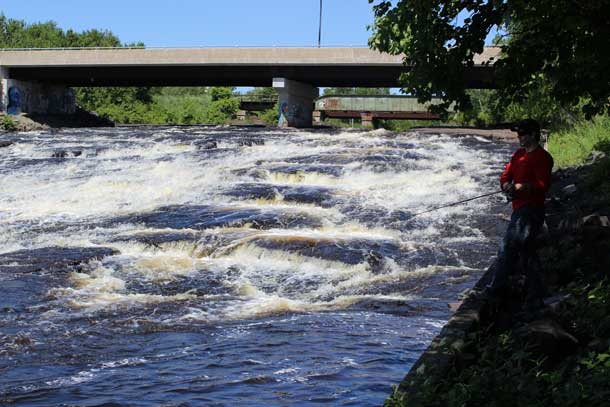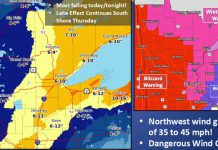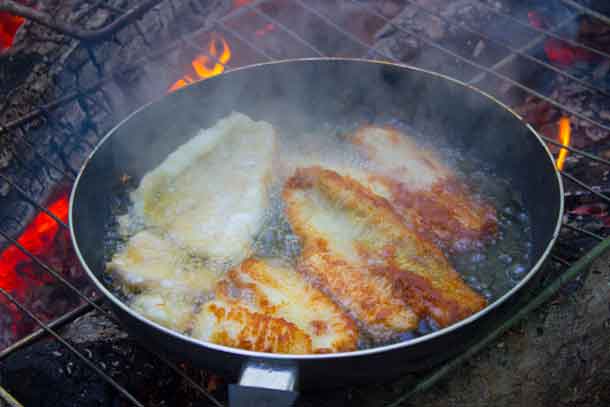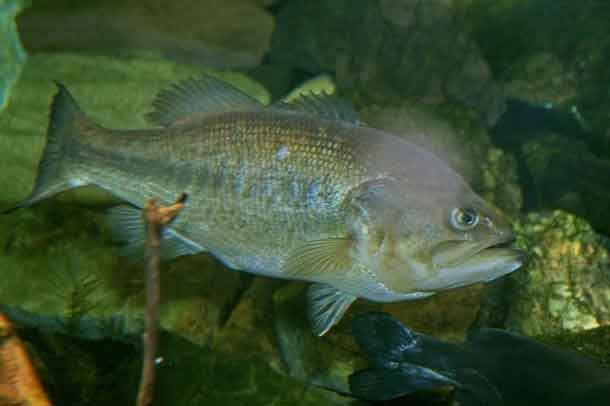By Bill McDavitt, Habitat Conservation Division, NOAA
THUNDER BAY – OUTDOORS – If you’re a fish returning from the ocean to lay your eggs in fresh water, you face some daunting challenges. You have to escape hungry predators in the ocean and in the river. You have to avoid fishing lines and nets. In the many rivers, you have to find your way past dams, up fish ladders, and through culverts. And you have to find just the right kind of river bottom for laying your eggs.
 |
One of the many obstacles you might run into is a hydropower dam. These dams are built across rivers to harness the power of the moving water. Part of my job as a habitat biologist is to make sure that fish are able to get where they need to go to lay their eggs so that there will be more fish for the future. That often means making sure there’s enough water in the rivers. To do that, I work with hydropower companies on something called “minimum flows.”
Hydropower 101
All hydropower projects have a choice to make about the water that arrives at the dam. Do they put all the water through a powerhouse to generate electricity? Or, do they let some of that water spill over the dam? Some facilities also have a power canal—it diverts the river into a canal that goes into the powerhouse. These can increase the amount of electricity the facility generates because the difference in water levels above the powerhouse and below the powerhouse are higher than if the powerhouse was located right at the dam. All hydropower dams have a bypass reach. Bypass reaches allow water that isn’t going through the powerhouse to go around it. Bypass reaches provide safe passage around the dam for migrating fish.
Flows High and Low
The two pictures to the right are the same location on the Merrimack River, but taken at different times. You can see the power canal that feeds water to the powerhouse on the left sides. The bypass reach is to the right of the narrower power canal. Water is flowing from the top of the photo to the bottom.
When flows are high, everyone is happy!
The top photo was taken in the spring, when flows were very high. There is plenty of water going down the power canal. The powerhouse is receiving as much water as it can, and is near its maximum generation ability. The whitewater at the top of the photo is spilling over the dam and isn’t used to generate electricity. The spilled water is flowing down the bypass reach. There is good habitat for migratory fish, such as alewife and American shad, in this bypass reach. When there is plenty of water in the bypass reach, there is plenty of room for fish such as alewife, blueback herring and American to move upstream to reach their spawning habitat that is upstream of the hydropower project.
When flows are low, fish habitat shrinks.
 |
The lower photo was taken during the late summer when flows can be very low. Water is still in the power canal, but very little is spilling over the dam—not much room for fish in the bypass reach.
Working Collaboratively
By working with the hydropower companies and the Federal Energy Regulatory Commission, we figure out what the minimum flow should be for the fish that live in these rivers. That minimum flow is then required as a permit condition to operate the dam. Even when water is low, the facility has to keep a minimum amount of water flowing through the bypass reach.
Why Does It Matter?
In the state of Maine alone, sea-run fish—those that go back and forth from river to sea—have lost access to a staggering 90 percent of their historic habitat. Populations have declined dramatically, and some species, like Atlantic salmon, Atlantic sturgeon, and shortnose sturgeon, are endangered.
Access to river habitat for these fish, as well as American shad, alewife, sea lamprey, striped bass, rainbow smelt, blueback herring, and brook trout, is an important part of healthy freshwater and nearshore marine ecosystems. These fish have supported recreational and commercial fisheries in the past. They also are favorite prey of fish like cod, haddock, and striped bass.
Making sure that fish have enough water to swim, feed, and reproduce in will help restore some of these populations to their former healthy sizes. This will, in turn, help bring back other fish populations and feed marine and land mammals, too. For those that enjoy recreational fishing for these fish, it can also increase the chances of catching one.







